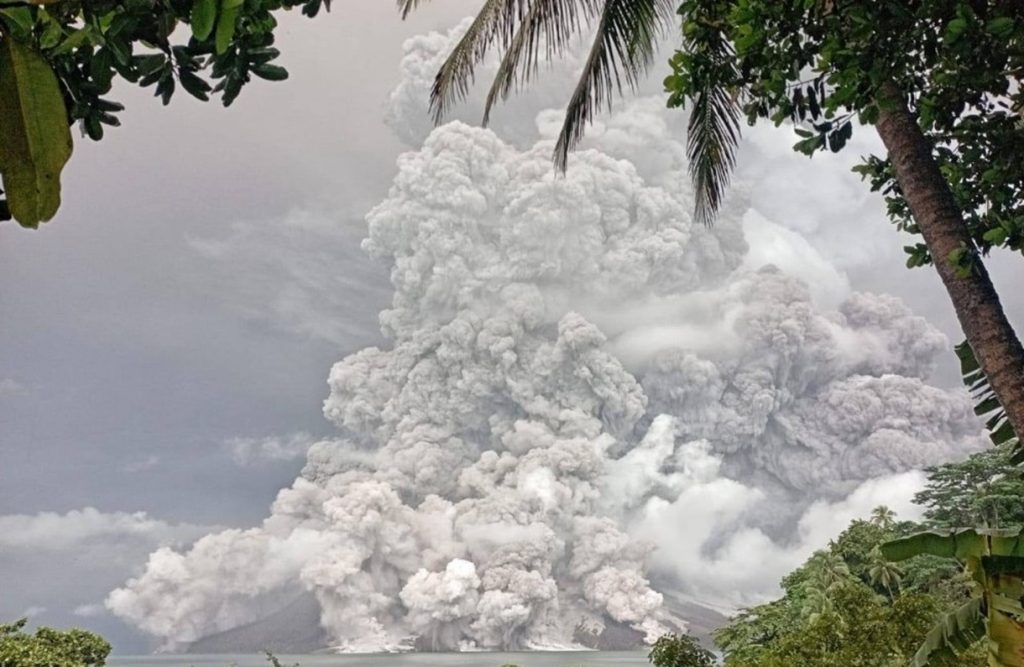The eruption of Mount Ruang in Indonesia’s North Sulawesi Province on April 30 prompted the evacuation of over 11,000 people, with the Indonesian government issuing its highest-level alert. The volcano has been particularly active since the first half of April, leading up to a powerful eruption on April 16. The eruption on Tuesday ended a relative lull of the past two weeks. Some 12,000 locals living within a 6-kilometer radius have been evacuated, including residents on the island of Ruang and nearby Tagulandang Island, amid concerns of dangerous ash surges, pyroclastic flows, landslides, and the risk of a potential tsunami.
Footage shared by netizens shows the massive column of ash rising more than 16,000 feet into the air, with the volcano erupting over 10 times since April 10. Lava has been raining down, with lightning crackling around it, caused by the static electricity generated by colliding ash particles. The eruption on Tuesday was larger than the previous one and possibly the most powerful since 1871, according to Bejo Prabowo, who heads the Indonesian organization Infomitigation. The eruption has caused damage to crops, hundreds of houses, and other buildings, while ash has affected flight conditions, leading to the suspension of flights at Sam Ratulangi Airport in Manado.
Mount Ruang is one of more than 120 active volcanoes in Indonesia and is situated within the Ring of Fire, a region in the Pacific Ocean basin known for frequent earthquakes and volcanic eruptions due to tectonic plate movement. Stratovolcanoes like Mount Ruang are steep-sided, symmetrical cones formed by thick, sticky lava that does not flow easily, creating conditions for high gas pressure that can cause explosive eruptions. Indonesia’s disaster management agency reported damage to crops and structures, but no casualties have been reported. The eruption has led to concerns over potential tsunamis if part of the mountain collapses into the sea, prompting the evacuation of thousands of residents.
The Indonesian Center for Volcanology and Geological Hazard Mitigation has not provided any official comments on the situation, and little data was gathered from a 2001 eruption of Mount Ruang due to inadequate monitoring resources. Residents in the affected areas have been advised to stay alert and prepared for potential evacuation. The eruption of Mount Ruang serves as a reminder of the volatile nature of the Ring of Fire region and the importance of disaster mitigation efforts. With ongoing volcanic activity and the risk of further eruptions, it is crucial for authorities and residents to remain vigilant and take necessary precautions to ensure the safety of the population living near active volcanoes like Mount Ruang.


